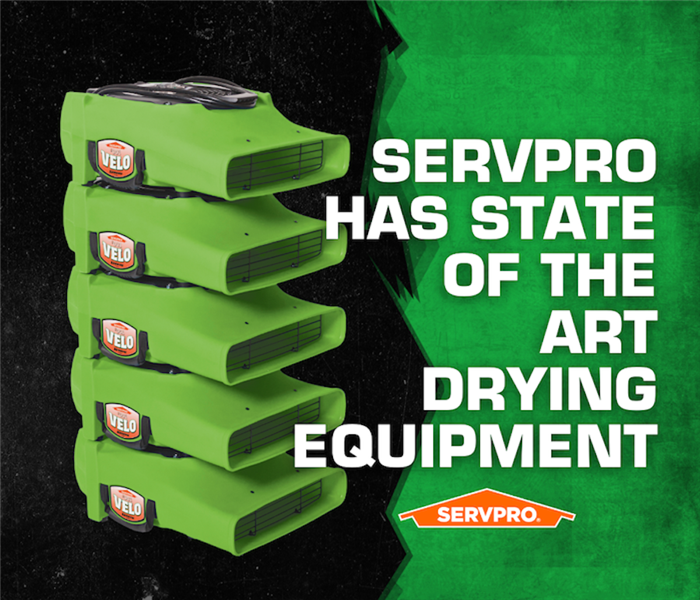Why Wet Concrete in Brookside Properties Poses Water Damage Restoration Challenges
2/10/2022 (Permalink)
 No matter the amount of water damage restoration you need for your home, SERVPRO IICRC certified techs always use state of the art equipment.
No matter the amount of water damage restoration you need for your home, SERVPRO IICRC certified techs always use state of the art equipment.
SERVPRO Relies on Advanced Testing to Manage Wet Concrete Surfaces in Brookside Properties
Concrete is used in different parts of a structure, including the subfloors. After water intrusion, you must address all the surfaces in your Brookside house, including the ones made of concrete. Unlike the other materials in the home, concrete has many unique properties like resilience against water damage, yet it is porous. It is also inorganic, so it is not damaged by mold, but the soils or residues on its surface can support mold growth.
If concrete surfaces are involved, the right skills and tools are necessary to manage water damage restoration at your Brookside home. Such skills help establish the extent of water absorption and, thus, the best way to handle the repair. Our SERVPRO technicians can help perform definitive tests against moisture.
Some of the advanced moisture tests include:
- Inspecting with non-penetrative moisture meters
- Calcium chloride tests
- Thermo-hygrometer test
The easiest way to check for moisture is by taking measurements with a non-penetrative meter. It requires a skillful approach since concrete has unique properties. For instance, concrete naturally has some moisture, so the check should establish abnormal moisture levels. The meters are only effective up to a depth of 1-inch, so further penetration may be harder to address. Our SERVPRO technicians use the meters for initial evaluation before other testing methods.
A calcium chloride test measures the moisture vapor emission rate from a slab. It requires a plastic dome and a small dish filled with calcium chloride. The container is sealed in the dome on a clean concrete section for three days. Since the calcium chloride readily absorbs moisture, the weight gain after three days helps determine the moisture vapor emission rate.
Another test our SERVPRO technicians can use is done using thermo-hygrometers. Our technicians drill holes in the concrete slab and insert relative humidity probes. It is necessary to give the probes at least 30 minutes to acclimate with the slab. This method requires holes drilled up to 40% of the thickest section of the concrete.
SERVPRO of Newark is well versed with advanced water damage restoration procedures, thus making it easier to address challenging issues. Call us at (302) 733-7933. We’re Faster To Any Size Disaster.






 24/7 Emergency Service
24/7 Emergency Service